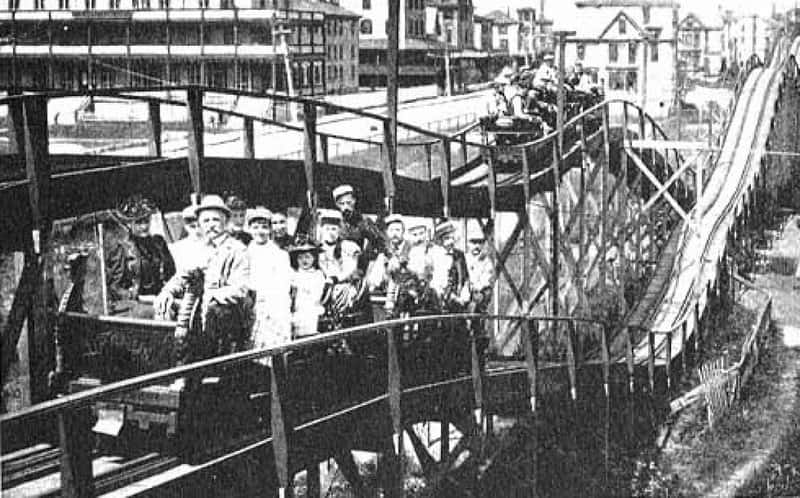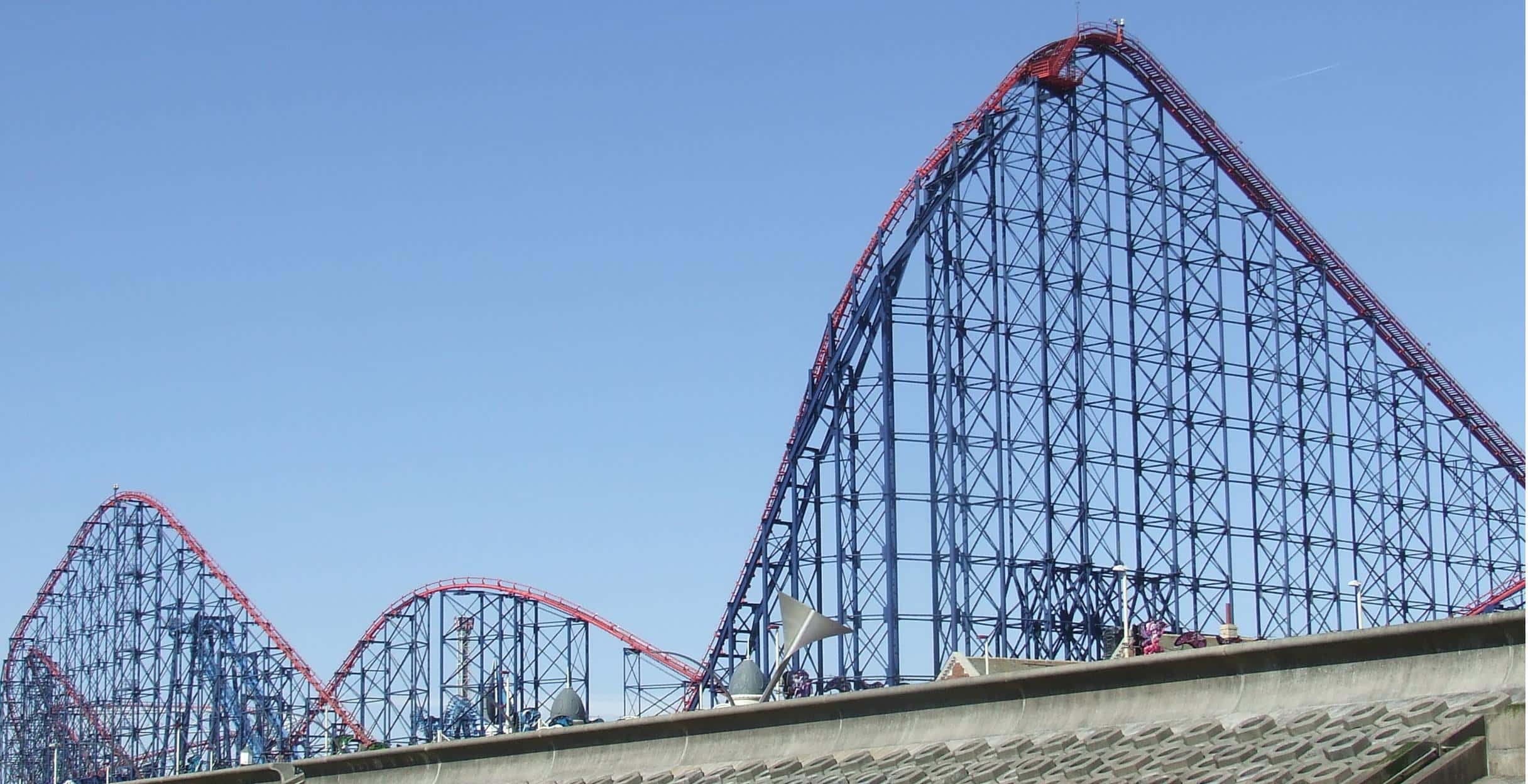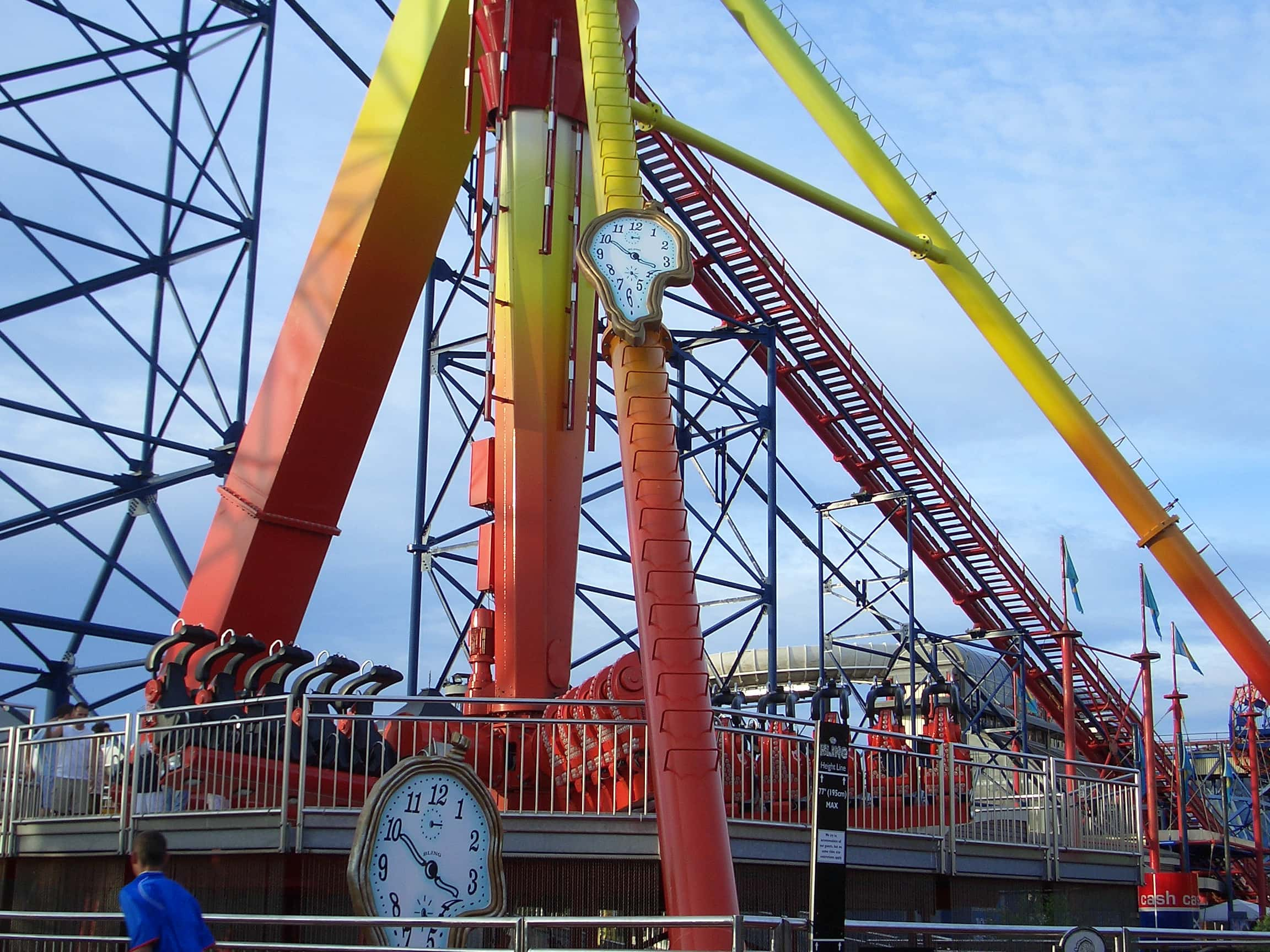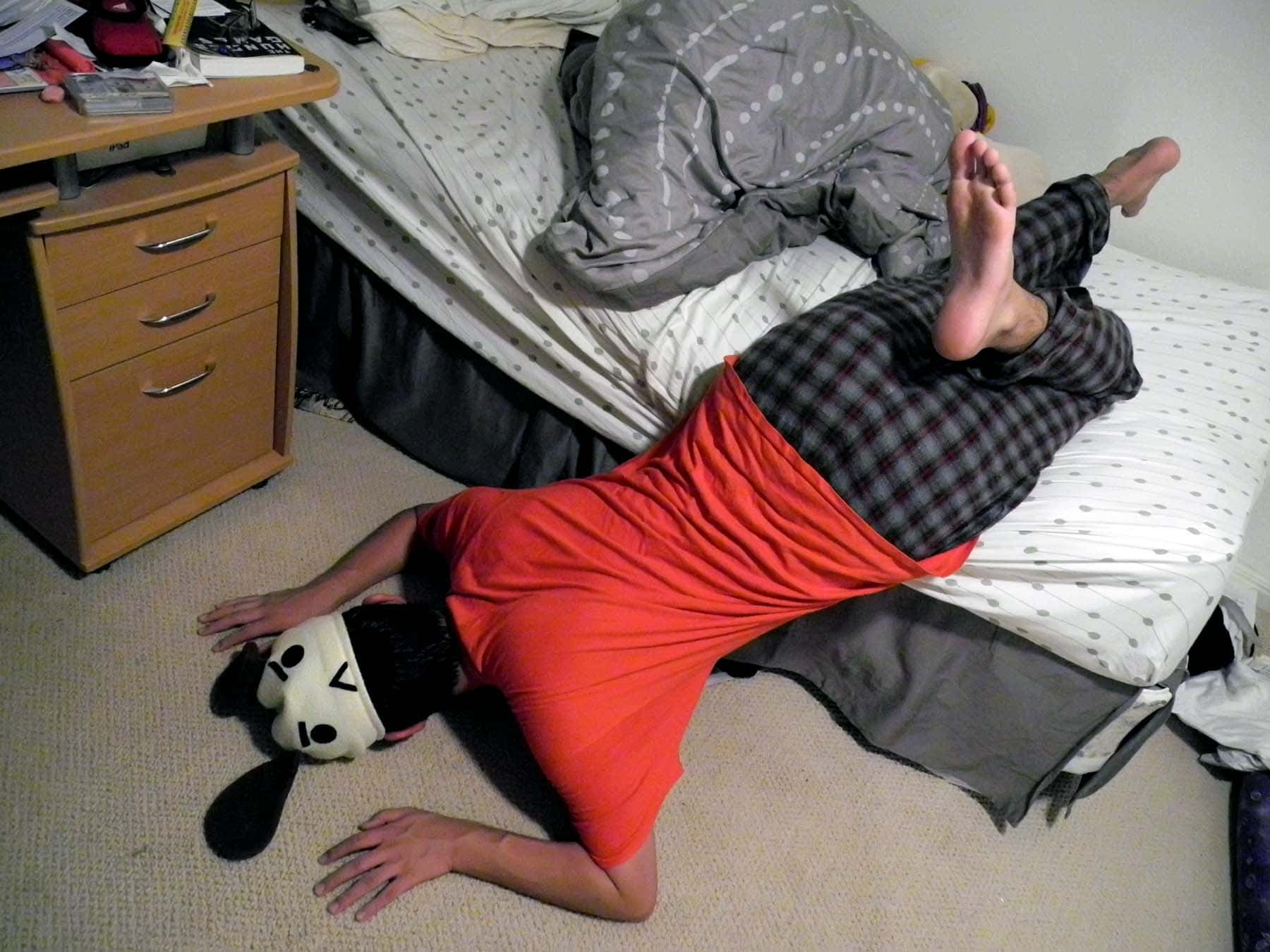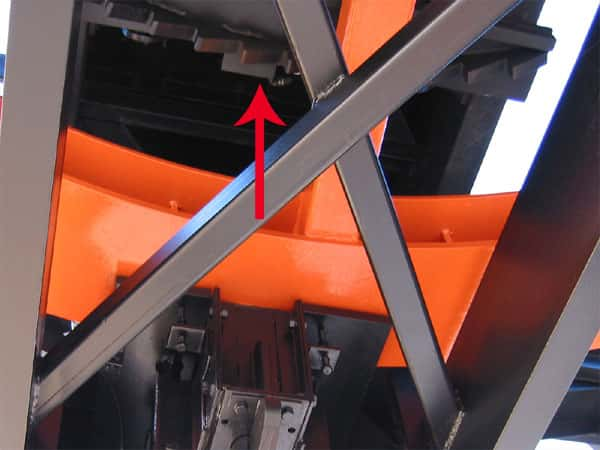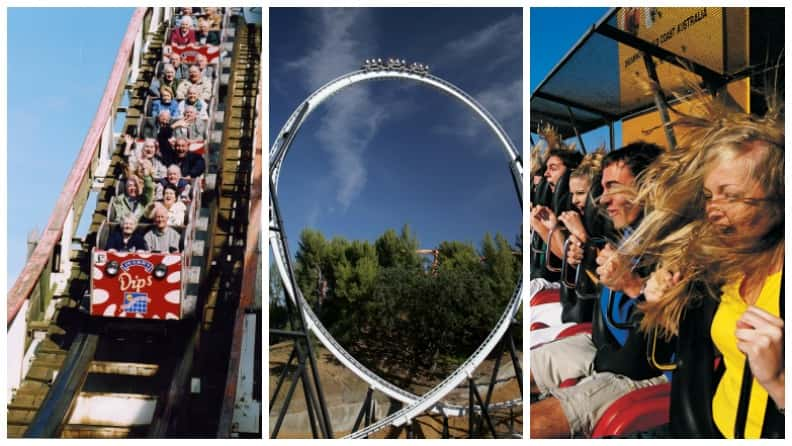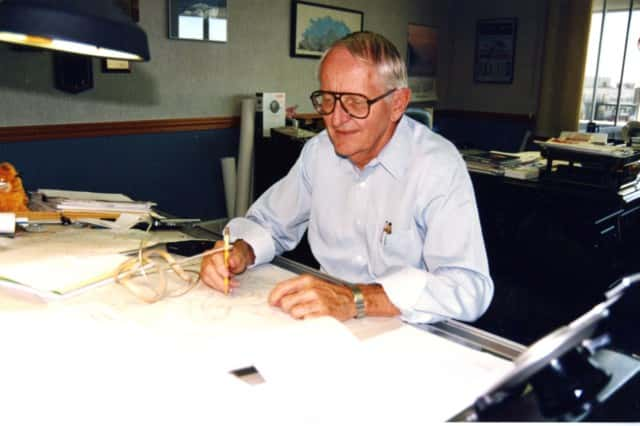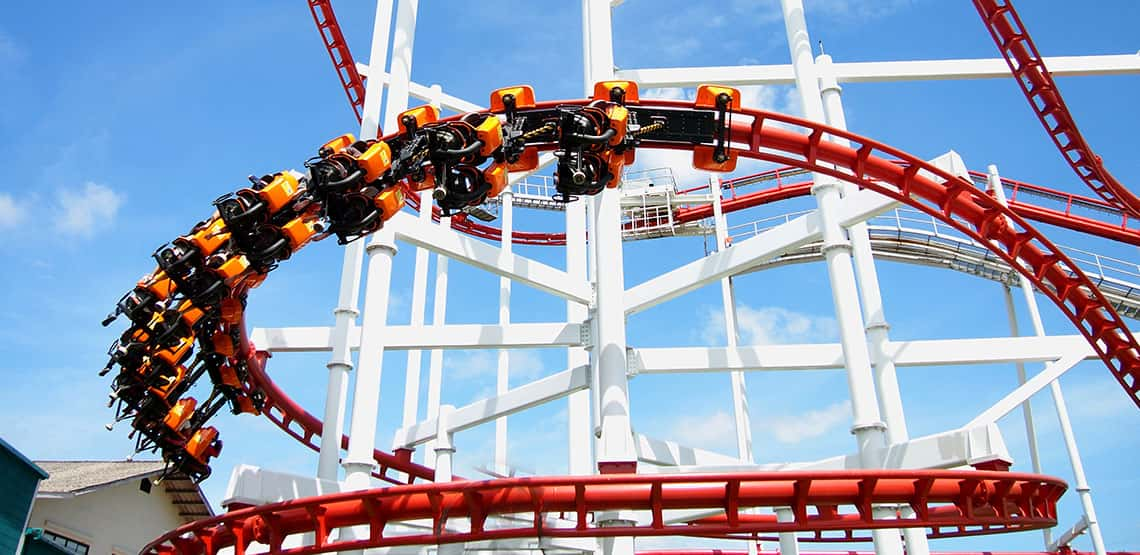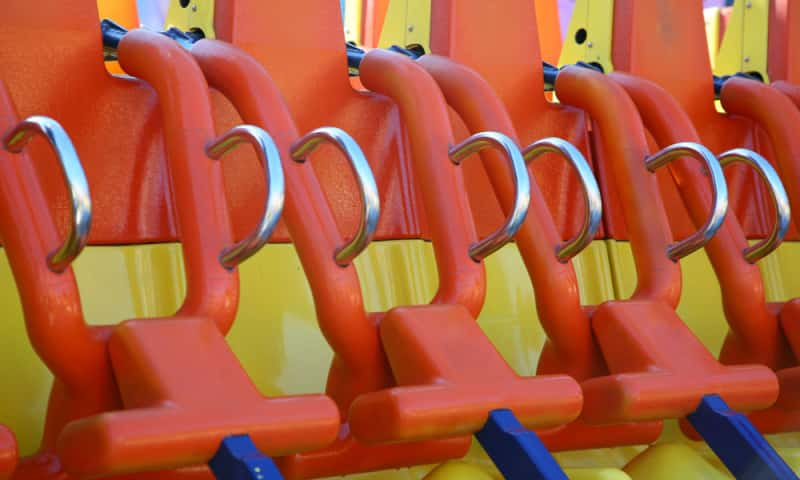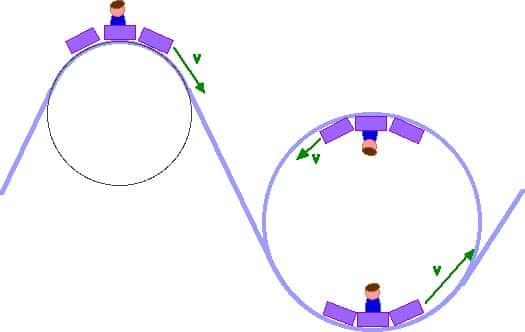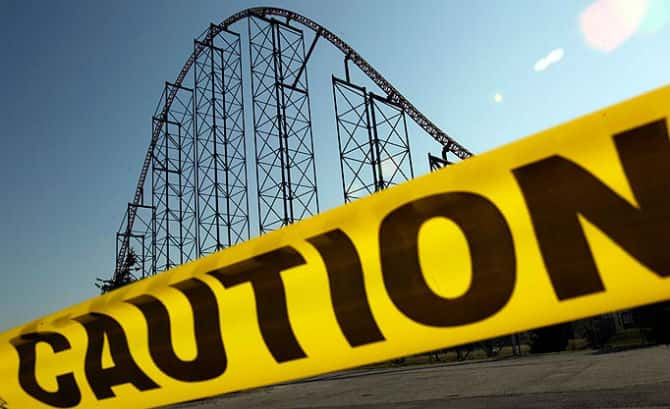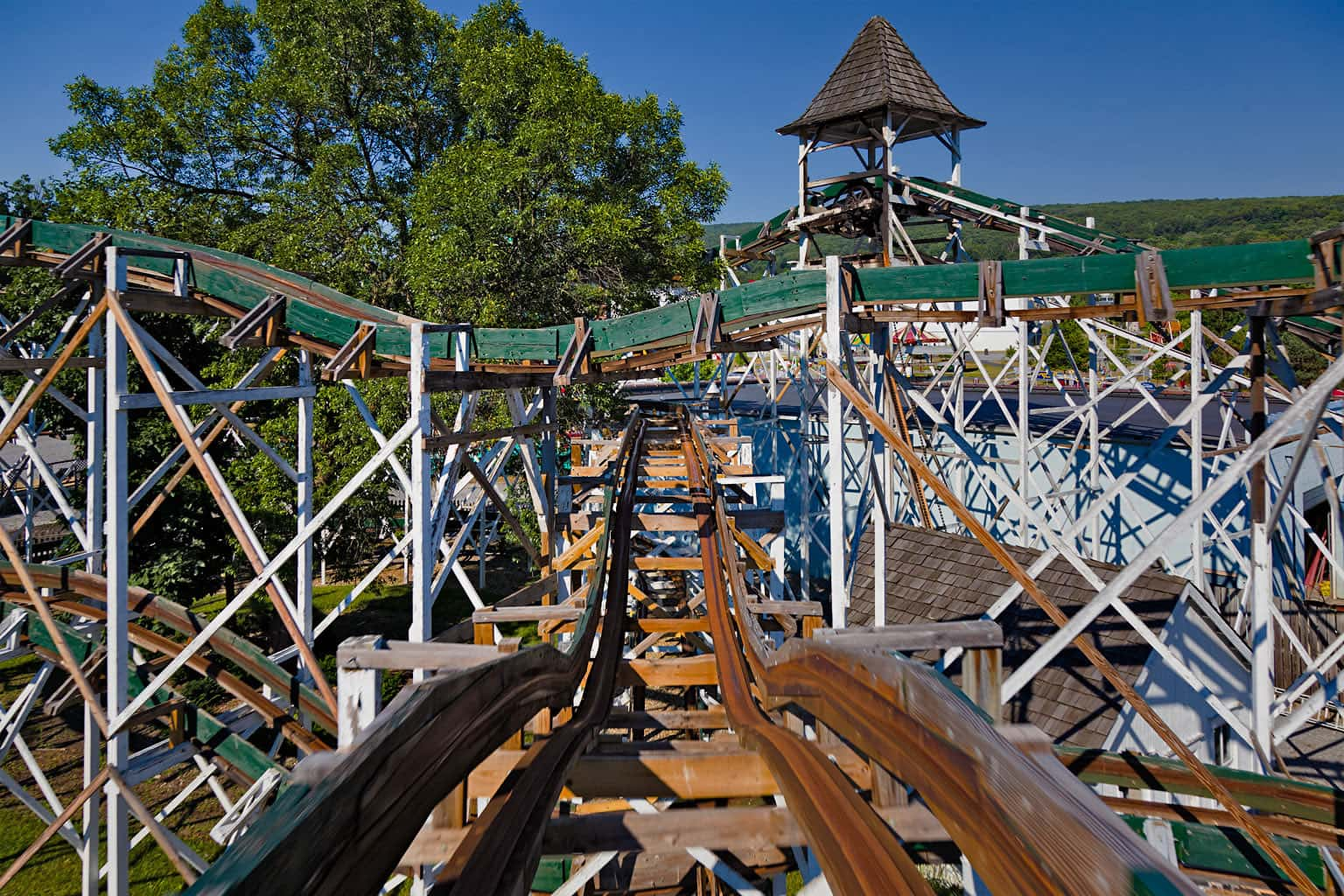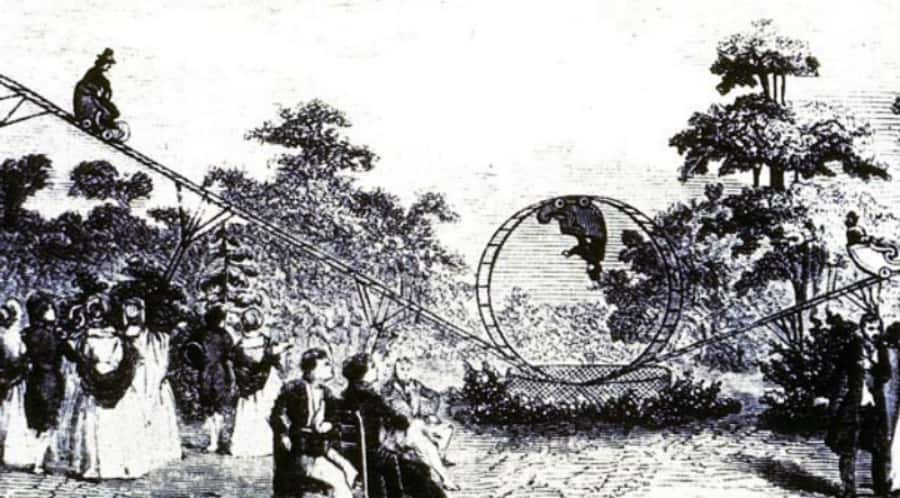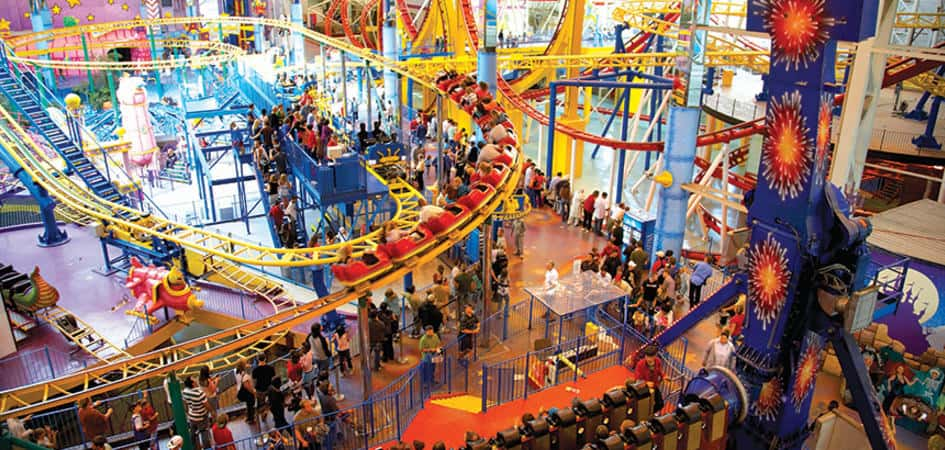Whether for the thrill, the rush, or just to say you did it once, the whole point of roller coasters is to experience a seemingly close brush with danger. They can be found all over the world, and range from light and fun to bone-chilling and death-defying. The engineers behind these extreme coasters are truly pushing the limits with their outrageous designs, because after all, us adrenaline junkies always want more, more, more, right? Read on to uncover 40 thrilling facts about roller coasters.
 YouTube
YouTube
Roller Coasters Facts
40. Rickety Good ‘Ol Time
Wooden roller coasters may be much more sensitive to the weather, but don't worry, they're still just as safe as their steel counterparts. Because wood can shrink or expand with changing humidity, on some days the ride might actually be shakier, noisier and more aggressive than usual. The structure can even flex back and forth more depending on weather conditions! Again, just a reminder, they're still perfectly safe, and as far as I'm concerned, the sketchiness is half the thrill of these old wooden behemoths.
39. Made To Last
Although wooden coasters need more maintenance and attention than steel ones, they can actually endure regular wear and tear for much longer.
38. You Get What You Pay For!
America’s first roller coaster rolled at a snail’s pace. In June 1884, at Coney Island in Brooklyn, thrill-seekers could ride the Switchback Railway roller coaster, which reached a breakneck speed of six mph, for the cost of a nickel—not quite what we’re used to today!
37. First Of Its Kind
Despite the less-than-impressive top speed, the Switchback Railway still managed to bring in some money, earning around $600 a day at one point (around $15,000 in today's currency). Not bad for a nickel a ride, and the fact that it introduced the concept of amusement park rides across the United States ain't too shabby either!
 YouTube
YouTube
36. A Side Saddle Coaster
Another cool thing about the Switchback Railway roller coaster: people didn't ride it straight on, they rode it sideways! Doesn't seem like the obvious choice, but hey, I'm not a 19th-century roller coaster engineer, and neither are you!
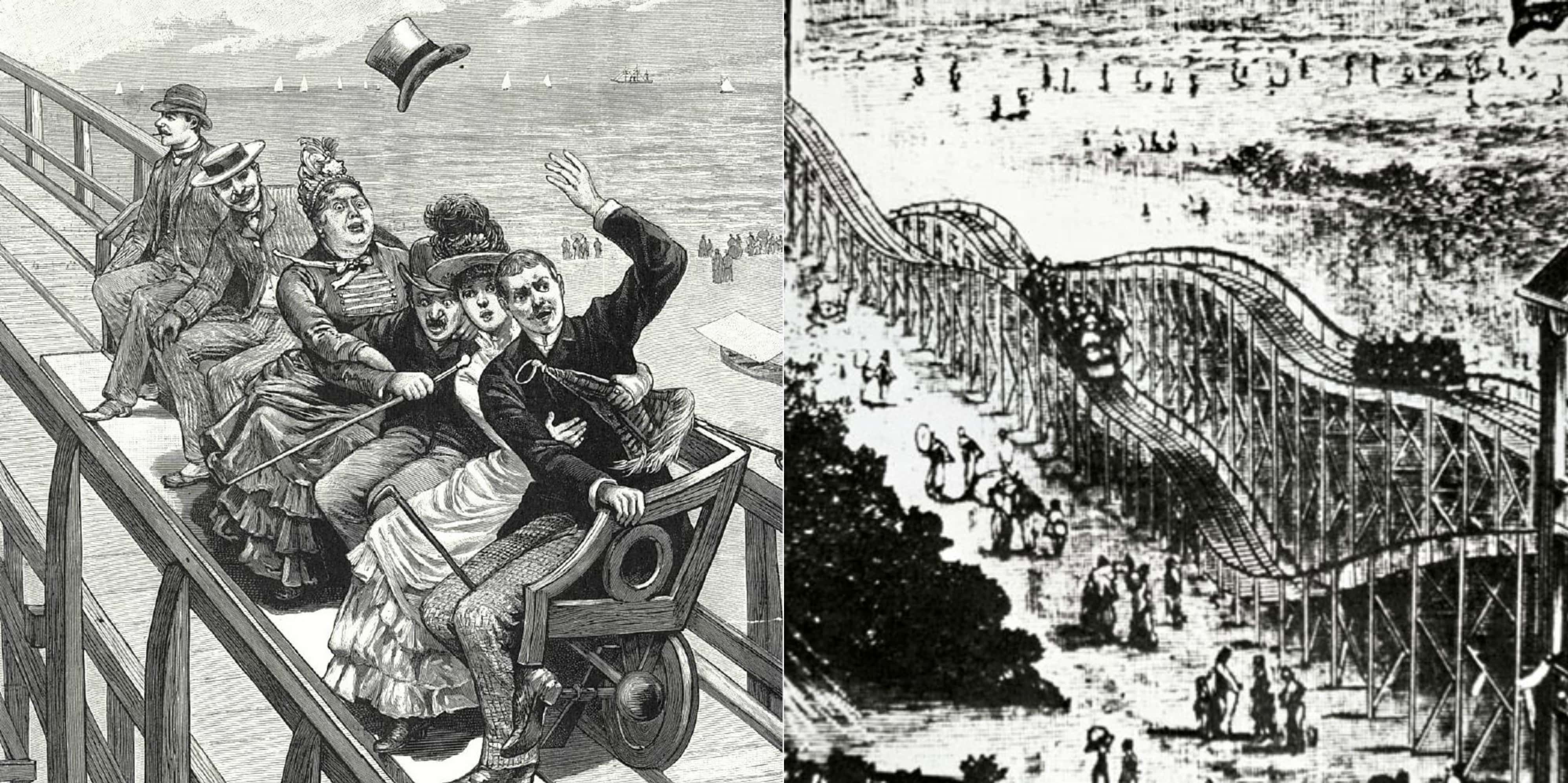
35. The More You Know!
Rollercoasters are typically designed with the layout of the park in mind. A tree that can’t be removed? That’s going to redirect the flow of the design. Conversely, if the park has zero obstacles, the designers have totally free reign to do what they want. Inspiration can come from anywhere... even from Jay Leno’s chin on the cover of People magazine. Pike has said that he incorporated a “loose representation” of Leno’s jawline into the design of a coaster in Holland!
34. Go Big Or Go Home
When the steel rollercoaster aptly named Big One opened at Blackpool Pleasure Beach in the UK, it was the tallest rollercoaster in the world, reaching 67 meters high. One million people ride it every year, and its trains and track are tested every single morning before operation. Although it has been surpassed by other coasters in height, it's still the tallest in the UK, even 22 years after its construction.
33. Extra Care
During the morning routine on Big One, engineers are literally harnessed to the track while they walk around and manually look for cracks, loose bolts and foreign objects that could potentially affect the safe operation of the ride.
32. Check Bottom To Top
After the visual inspection, sandbags are strapped into the train to simulate passengers. The train is then sent around the track at full speed, around 76 mph. The four sets of three wheels alongside the undercarriage must also be inspected, as well as the brake fins—what, did you think the brakes were left out of inspections? That's crazy talk!
 Nuestro neverland
Nuestro neverland

Sign up to our newsletter.
History’s most fascinating stories and darkest secrets, delivered to your inbox daily. Making distraction rewarding since 2017.
31. The Whole Package
Walt Disney World's Expedition Everest took six years to design and create. While its height, length, and speed are fairly average as far as coasters go, it’s set apart by its storyline—a yeti guarding the “forbidden mountain”—and the fact that it can go forward and backward during a single ride. It also stands above the rest when it comes to its elaborate set designs that add to riders' experiences long before they even strap in.
30. No Cheap Thrill
Oh, and Expedition Everest is the most expensive roller coaster in the world, coming in at $100 million. That's a spicy meatball!
 YouTube
YouTube
29. For Your Information
While stories about accidents are widespread, coasters are statistically far safer compared to other common activities we engage in on a daily basis. Of course there’s a random incident here and there, but according to the National Safety Council, there’s a one in 24 million chance of getting seriously injured on an amusement park ride. You have a way better chance of dying from falling out of bed in the morning—a one in 423,548 chance to be exact.
28. The Sound Of Safety
That clicking you hear while going up the lift-hill on a roller coaster? It’s actually an intricate anti-rollback device, a standard safety feature consisting of a continuous, toothed metal ratchet on the track that fits into teeth on the bottom of the train. This system ensures that the train can't roll backward in the event of a power failure or broken chain. So that clacking is a very good sound to hear!
27. Who Thought Of This!?
This was one thrilling world record to break, but they did it! In a single day, Philip Guarno, Adam Spivak, John Kirkwood and Aaron Monroe Rye went to ten parks in four US states to go on 74 roller coasters in 24 hours! They used a helicopter to get from park to park as quickly as possible, and the record setting day raised $40,000 for the Children’s Miracle Network. Where do I sign up?
26. Oh, The Irony!
The late Ron Toomer, known as the king of steel roller coaster design, designed 93 rides for big American amusement parks including Six Flags, Busch Gardens, Knott’s Berry Farm and Cedar Point. Despite his prolific work, he actually suffered from intense motion sickness. This has led to a rumor that he never rode a single ride that he designed, but that's not actually the case. Truly a man to suffer for his craft, he would still usually ride his coasters at least once or twice.
25. This Is Something That Would Happen To Me
Fabio, the Italian-American actor/model/spokesman famous for his romance covers, became even more of a household name after taking the inaugural ride of Apollo’s Chariot at Bush Gardens on March 30, 1999. Things didn't exactly go as planned, and he's been connected to roller coasters ever since.
24. What Are The Chances?
Fabio was sitting in the front row of the coaster when a goose flew into his face after the ride’s first drop towards the ground at 70 mph. The bird slammed into the front of the car, broke its neck, then flipped backward and upward right into Fabio’s face, hitting his nose and leaving a cut that would later require three stitches. No bones were broken, but there was blood splattered all over him—we're not exactly sure what the ratio of goose blood to Fabio blood was...
23. Jay Leno says, “…A collision between birdbrains.”
The reason this incident spread like wildfire so intensely around the world (remember, there was a time before social media!) is because of how unlikely the odds were. In the 24 years that Busch Gardens had been open, Fabio was the first celebrity—a model whose livelihood depends on his face—on an inaugural ride, in front of extra media covering the already big day!
22. Hey, If You Call Into Work Sick, You're Not Exactly Lying
August 16 is National Roller Coaster Day. To celebrate, people are encouraged to head on over to any amusement park, ride a coaster and snap a pic using #RollerCoasterDay on social media. Hey, I don't need an excuse.
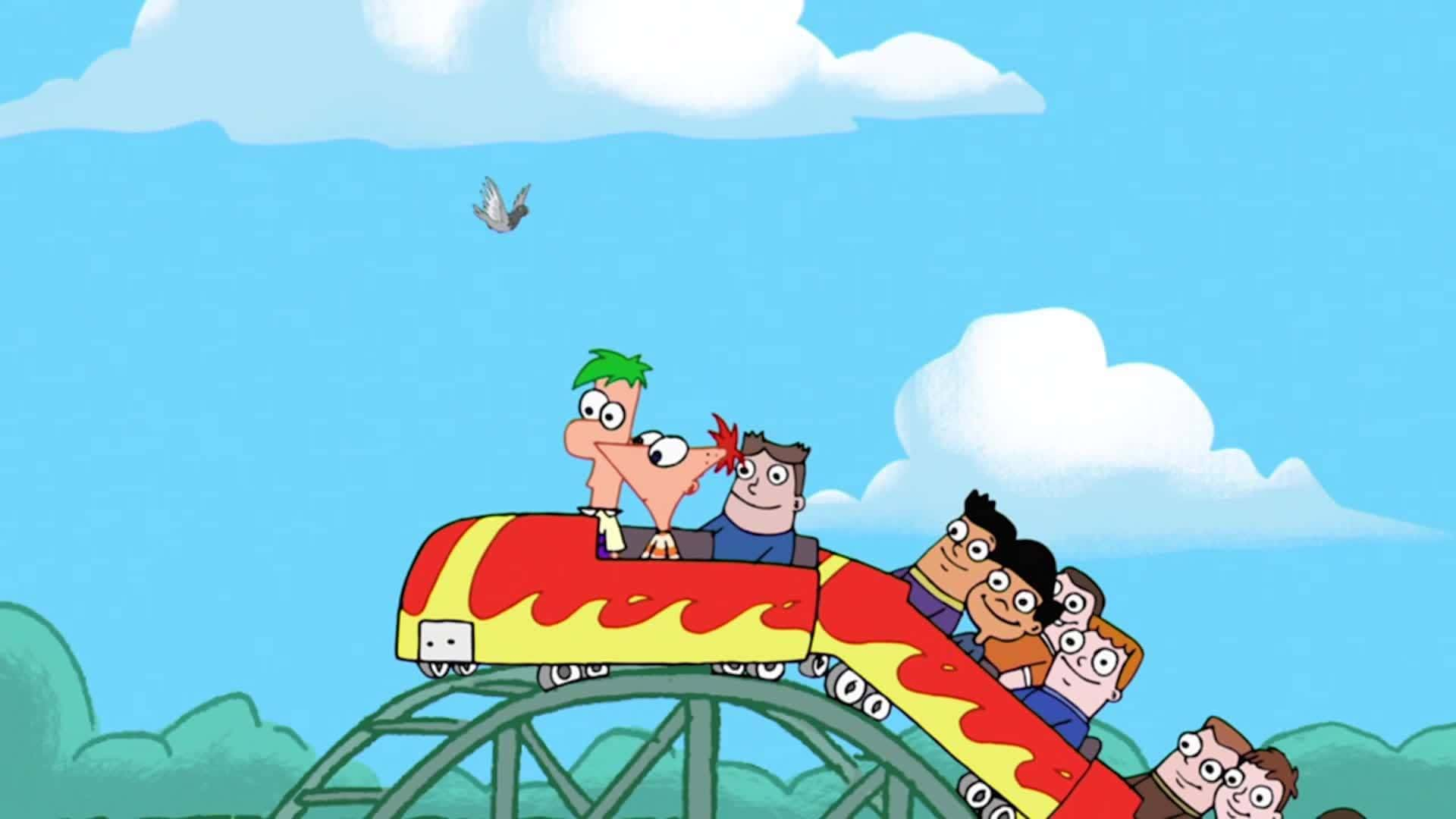 video.disney
video.disney
21. A Scientific Achievement
Ever notice how loops on roller coasters are never perfectly circular? They're deliberately designed to be an upside down “teardrop” to allow for less intense g-forces on the riders. A more severe loop might cause neck injuries for the poor saps who strap in for a ride.
20. Yikes!
The loops on roller coasters are so well designed that if you (for some insane reason) chose to ride without a safety harness, you wouldn’t fall out! But just because the science checks out, its probably best to stick with the harness, just in case.
19. The Best Part Of The Ride
When you're at the very top of a loop, gravity is trying to pull you out of your seat, but the car's acceleration is doing the opposite—it's pushing you into your seat. These two forces counteract each other, which is why you might feel weightless for a moment right at the loop's apex, until you end up right side up again and your acceleration starts working with gravity. When that happens, you actually start feeling heavier than normal for a short time.
18. Floating Organs
Anyone who’s ever been on a coaster is familiar with that “stomach in your chest feeling”—the one that happens when you suddenly dip down really fast. This is caused by your organs experiencing a change in forces, but it's not the removal of the downward pull of gravity that causes it. Actually, what you're really feeling is the absence of the upward push of the ground. When freefalling, every part of you is accelerating at the same rate, without the upwards force from the ground that your body is used to.
17. Hate the Rider, Not the Ride
In 2003, the Brain Injury Institute of America released a study that claims “the risk of brain injury from a roller coaster is not in the rides, but in the rider.” In the study, of the six injuries examined, all had been caused by previously undetected brain conditions, meaning that warnings about things like high blood pressure, heart disease, or a heart condition must be taken seriously when deciding whether or not to get on a roller coaster.
16. Well, Thank Goodness!
Roller coasters have highly sophisticated braking systems that can stop precisely at the end of the ride or in an emergency. In order to accomplish such an accurate and immediate halt, the brake system is actually built into the track rather that the train itself.
15. That’s So Extra
There are an extraordinary amount of roller coaster types, including sit-down, stand-up, inverted, suspended, pipeline, bobsled, flying, and, my personal favorite, the fourth dimension, where two seats are positioned on either side of the track. These seats spin on their own axis, either freely or in a controlled motion, for added effect and scary fun!
14. The Coaster Equivalent Of The Speed Of Light
The fastest roller coaster in the world today can be found at Ferrari World in Abu Dhabi, in the UAE. It’s called the Formula Rossa and it reaches 150 mph in just under five seconds!
13. Safety First, Second And Third!
When it comes to thrill rides, especially roller coasters, safety is the obvious concern. They're generally inspected at least once a day to make sure everything is operating smoothly. Engineers will check for loose bolts, excess rust, leaky oil, and any other hazards that could prevent it from running anything less than perfect. During the busy season, these inspections are usually increased to three times a day!
12. Info From A Pro
Many people are still (rationally or not) terrified of roller coasters, but influential roller coaster engineer Jeff Pike wants these people to know that roller coasters are built with an extreme attention to detail, where "every single bolt, screw, and nail has been carefully planned."
11. Minutes To Ride, Years To Make
It can take between two and five years for a roller coaster to make it from the drafting table to the amusement park. I for one am totally OK with them taking their time to make sure that they've got it right.
10. Opening the Floodgates
Rollercoaster Tycoon, the classic computer game that gave players the opportunity to design their own virtual amusement parks, was first released in 1999. Jeff Pike, the President of Skyline Attractions and a designer in his own right, has actually said that the game was a sort of "gateway drug" for future roller coaster designers, with many of them first being introduced to the craft through playing as kids.
9. Thrill Designers
Acknowledging that the human body is a limiting factor in designing more and more thrilling rides, Walker believes the future of roller coasters lies in psychological stimulation. People can only take so many Gs of force before blacking out, so designers and engineers must move towards mental stimulation, playing on real human fears, if they want to continue to push the limits of what a thrill ride can do.
8. This Sounds Terrifyingly Fantastic
Vertical coasters are pushing boundaries, too. A design known as the "Polercoaster" is on the horizon, which features a coaster built around an extremely tall tower, complete with an observation deck on top. The idea behind these coasters, aside from being a new and different kind of thrill, is that they would be ideal in places where land isn’t cheap or plentiful, such on the Vegas strip. Four of these towering rides have been proposed thus far, though none have been built just yet.
 YouTube
YouTube
7. Too Old For Me!
Feeling brave? The oldest operating roller coaster in the world is in Altoona, Pennsylvania. It's called Leap-The-Dips, and it was built in 1901. It was shut down in 1985 and nearly destroyed soon after, but it eventually reopened and is now considered a National Historic Landmark (though sadly, it will be closed for the 2018 season for restorations).
6. Gotta Have Fun In The Cold Somehow!
The precursor to the modern day roller coaster originates in 17th century Russia. Russians would freeze water over a 70-foot-tall wooden structure, effectively making an “ice ramp.” Riders were seated in blocks of wood and ice stuffed with straw and pushed down from the top to the bottom! These chilly thrill rides were called Russian Mountains, and they were especially popular around the city of St. Petersburg. To this day, the word for "roller coaster" in many languages is a translation of the term "Russian Mountain."
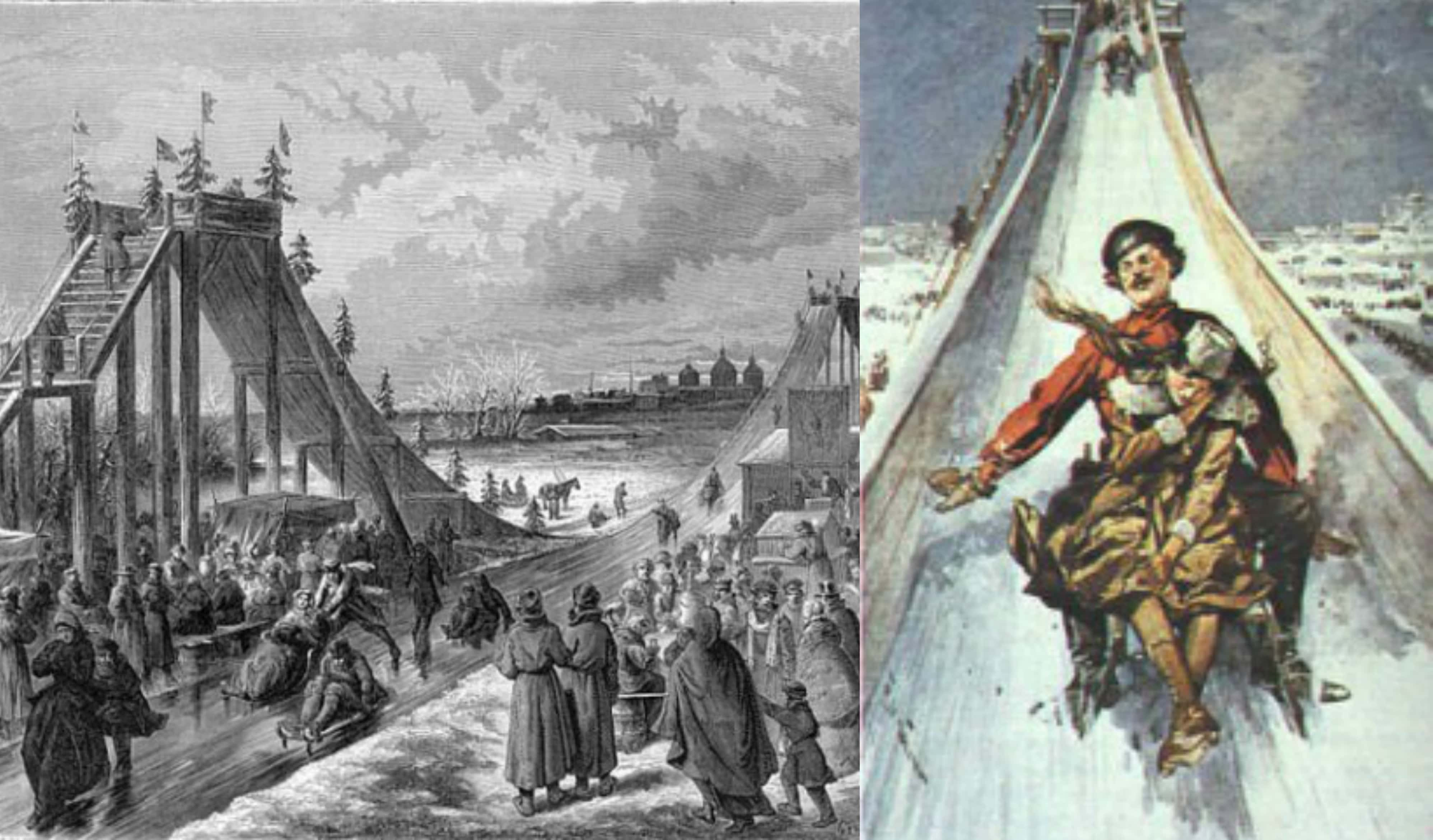 youtube
youtube
5. Game Changer
Parisians wanted to partake in the outdoor fun that the Russians made famous, but the warmer weather in France quickly turned the ice into water. As a result, they added wheels onto the sleds, and designed a track for the ride. In 1817, the first modern roller coaster was brought to life in the famed City of Light. Another milestone set in 19th century Paris was the very first roller coaster featuring a loop. Now listen, there's going to be a lot of information coming up about how roller coasters are actually very safe, but I have a feeling the same can't be said for a looping coaster that was built in 1846.
4. A Spectacular Performance
Brendan Walker is a thrill engineer (best job title ever?), and his job is to understand and research physiological responses to roller coasters and help design rides. Walker says that when you’re creating a roller coaster, it’s not just about the loops and drops—it’s about the choreography, the theatre, the tempo, and understanding your audience. Sounds like quite the artiste!
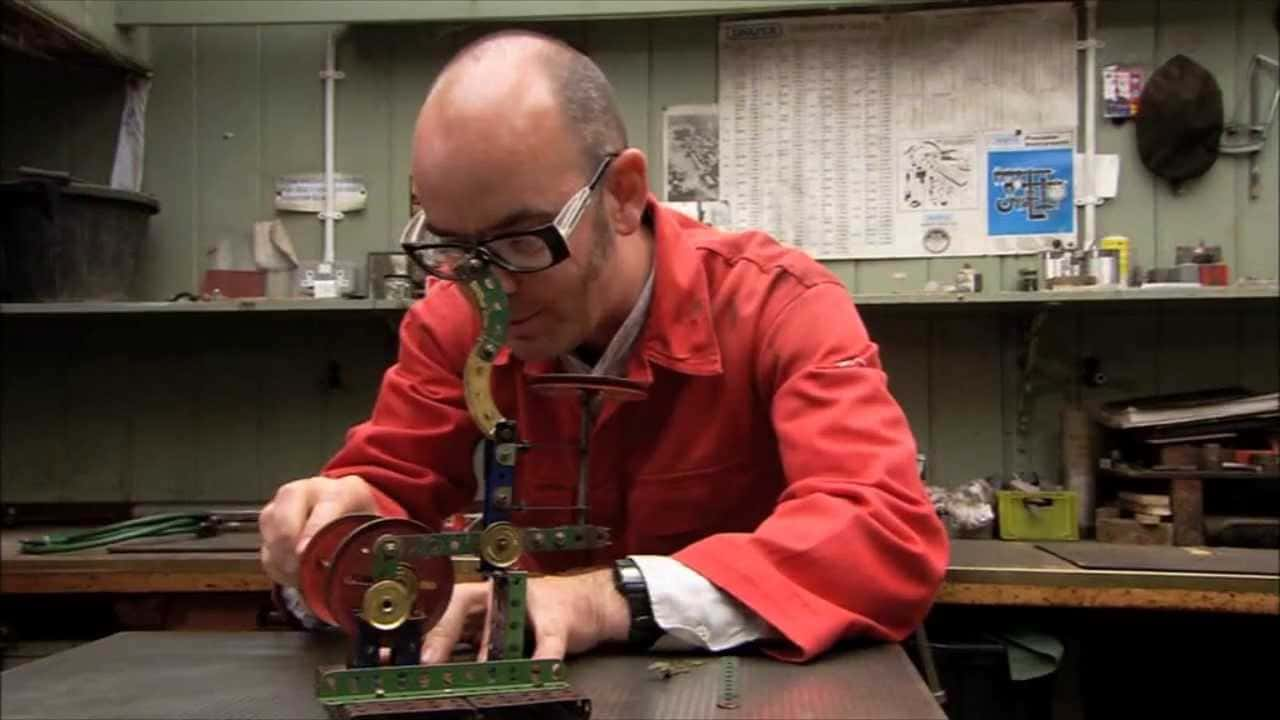 YouTube
YouTube
3. This Is SOO True!
Walker has said that riding a ride itself isn't actually the most exciting part—it’s the moment the lap bar is locked down, capturing that sense of “no turning back,” that actually constitutes the highest moment of arousal. The rest of the ride, according to Walker, usually only captures around 80% of that feeling.
2. A Terrible Accident
The Mindbender, located in Alberta's West Edmonton Mall, is the world’s largest indoor triple-loop roller coaster. On June 14, 1986, one of the cars derailed while traveling at 60 mph, just before entering the third and final loop. The train couldn’t clear the loop and slid backwards, crashing into a concrete pillar. The lap bars disengaged because of the damage from the derailment, throwing four passengers 25 feet to the floor below. Three died, a fourth was critically injured, and 19 were treated for injury. Further investigation showed there were several factors leading up to the crash: bolts on the left wheel were loose, there were some design flaws from the get go, and the mall hadn't adequately maintained the ride, all of which could have played a part in the tragedy. The kicker? The Mindbender had been billed as “one of the world’s safest rides.”
1. Any Takers?
Since the accident, the Mindbender trains have been redesigned and anti-rollback features have been added. It is still in operation today.
Sources: 1, 2, 3, 4, 5, 6, 7, 8, 9, 10, 11, 12, 13, 14, 15, 16, 17, 18, 19, 20, 21




